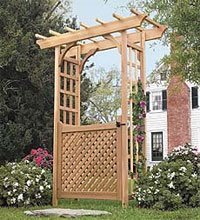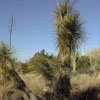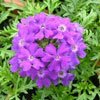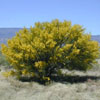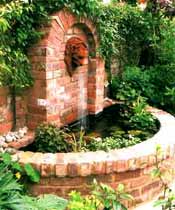Gardening Gloves
Saturday, September 16, 2006 Gardens are beautiful places to relax in. They can also provide endless enjoyment if you are a gardener. The idea of having flowers that give off pleasant smells as you pick your garden fresh vegetables and herbs is a pleasing one. The amount of pain that unprotected hands can go through however might make you reluctant to prune those rose bushes.
Gardens are beautiful places to relax in. They can also provide endless enjoyment if you are a gardener. The idea of having flowers that give off pleasant smells as you pick your garden fresh vegetables and herbs is a pleasing one. The amount of pain that unprotected hands can go through however might make you reluctant to prune those rose bushes.Gloves, in particular gardening gloves are the most important item that a gardener can possess. The process of choosing the right glove can be a little difficult especially if you are new to gardening. There are a few tips that can make buying your gardening gloves easy.
The best type of gardening gloves should be made from very good quality leather. They must also be gloves that can be used for whatever gardening job that you will embark upon. Buying a pair or two of general purpose gardening gloves that have a cloth backing to them, will let your hands stay cool and comfortable during the time you are gardening.
Many times you might decide to do some gardening after it has finished raining. This will mean muddy and very wet gardening. The idea of working with wet, slippery hands may not appeal to you. Therefore selecting rubber gardening gloves that have a cotton lining will absolutely protect your hands from the mud and dirt of a rainy garden.
To ensure that your plants stay healthy and insect free, many of us will use a pesticide. Wearing gardening gloves made from latex or plastic will not help to protect your skin from the harmful effects of the chemicals in pesticides. Neoprene gloves on the other hand are made for this purpose.
All most every garden has roses bushes planted in them. While a rose bush that is filled with blooms is a gorgeous sight, the many thorns on the plant can make a gardener's heart sink. To prune those very thorny plants you should wear gardening gloves that have long wrist protectors.
When the time comes to transplant your delicate seedlings in the garden you need gardening gloves that will let you handle them with care. However there are many plants that must be planted in the garden during the early winter season. Wearing gloves to protect your hands from the cold is a good idea, but it can impede your ability to feel the process of transplanting. For delicate winter time transplanting fingerless gardening gloves will allow you to do this delicate and detailed work, whilst keeping you as warm as possible.
The only other tip that you need to consider when you choose your gardening gloves is to see that they fit your hands comfortably. So, take heart, take plenty of notes, plan, and buy to your heart's content. Remember that gardening gloves truly are a gardener's most trusted companion. They will not only help to protect your hands from dirt, mud and thorns, they also aid in the prevention of painful blisters. Thus you will need to choose your gardening gloves with care.Labels: flower, flowerinsf.com, garden, Gardening Gloves, gloves



